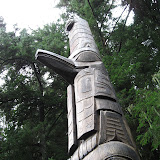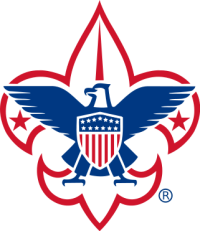Shee Atika
Although the last visit was 9 years ago, I've been to Alaska several times before, but never this late in the summer. As a result this is the first time I've been there to witness the salmon spawning which was an incredible experience. The only thing I can think to compare it to is watching a thunderstorm overflow the storm sewers. Hundreds upon hundreds of salmon fill a stream that is in some places 3 inches deep. Mostly they just hover in place spending only the energy it takes to resist the current. At this point in their life cycle they are near death and very weak. At one point Roger reached into a stream and just picked one up out of the water. I reached in and held a few of them, and they barely struggled against me. The bears near the coast grow much larger than those in the interior because they can gorge themselves on salmon before hibernating every year.
The only really low tides while I was there happened before dawn, so I got up at 5:30 on Saturday to go explore the tidal pools. There is a small island right off of the coast of my Aunt's place called Magic Island, because at low tide there is a path that runs out to it from the beach. It's a great place to observe the intertidal wildlife. This was the first opportunity I've gotten to test out the waterproof case for my camera, so you'll see some neat pictures from that in the album. I discovered that morning that starfish are as entertaining for me at 23 years of age as they were when I was 13. One pycnapodia decided it was not going to let go of my hand under any circumstances. Maybe it thought my hand was the last thing saving it from being swept into the cold dark abyss. Maybe it thought something was imminently going to devour it if it let go. Maybe it thought that my hand tasted like a delicious rotting carcass. It probably didn't think anything at all, but I'm sure whatever Precambrian era these things evolved in didn't prepare it for dealing with curious little kids. After about 10 minutes of trying to coax it back into the water or onto a rock, I finally had to just tear some of it's little tube feet and pull it off. These things readily grow back whole arms so I'm not too torn up about it. Some salmon were feeding right next to the island and periodically leapt into the air.
The incredible thing to me about the whole area is how full of life it is. The morning I left we saw a pod of killer whales moving through the bay behind my aunt's house, a male, female, and two young. My aunt tells me that the island has one grizzly bear per square mile. It's hard to go a day without seeing a bald eagle. Ravens and various shorebirds are everywhere. On Friday Linda, Lee, and I drove 15 minutes up harbor mountain and within half an hour had picked more blueberries than I could eat in a month. Huckleberry bushes are everywhere, as are blackberries and salmon berries (like raspberries but orange.) I know that generations ago much of America was probably just as verdant, but by comparison to what exists now Alaska seems singularly blessed. The livelihood of everyone in the region is dependent on the vitality of the land; fishing, lumber, and tourism are the major industries. The wilderness cannot be ignored, and it infuses the local culture. Every mountain in view has a name that everyone knows. The local radio station is KCAW, Raven Radio. People regularly talk about the odd things they've seen local wildlife doing, and it's a rich set of stories. One thing that has often bothered me about living in Mountain View is how little the architecture and culture responds to the area in which it is built. Except for the ever-present sun, Mountain View could just as easily have been built in Iowa or New York. Green grass simply does not grow here on it's own, and we spend a lot of water to transplant it. Industrial salt evaporation pools block our access to the bay, and we don't know the names of our mountains. The Steven's Creek trail and Shoreline Nature Preserve are blessings, but in the residential and commercial areas the natural beauty of the area is ignored. I think the Stanford campus and much of San Francisco get it right architecturally, and I wish more places did.
The native population plays a large role in the culture of the Sitka. The name Sitka is an anglicized form of "Shee atika" which was the Tlingit name for the village (atika) in the region they called "Shee." Northwest coastal native art is possibly my favorite style of art, and Sitka has some great examples of it. The style is a wonderfully inventive blending of strict and elegant iconography with compositional experimentation. The components of the forms are attractive in themselves but the brilliance I see in it is in the ways the animistic figures are bent to fit within the geometric shapes of decorated objects or as compositions on their own. Sitka National Historic Park (totem park as I've always called it) has many very impressive totems on it's path through the woods. This picture should give you a sense of the scale of these things. The more naturalistic raven head at the bottom of this totem is modeled after the helmet that a famous Tlingit warrior wore into battle against the Russians. You can see the actual helmet on display at a nearby museum and it is still periodically used in ceremonies. Totems are still regularly made, and the going price is approximately $1,000 per foot if you'd like to commission one.






Roger has been running the Sitka Fine Arts Camp for 7 years now which teaches native arts amidst music, art, and drama. Recently he's become an advocate for the building of a brand new and beautiful theater at the local high school. It's nearly completed, most of what remains to be added is the expensive electronics. One neat bit of legislation in Alaska is that 1% of the budget of every public building project is required to be set aside for art to decorate it, and I really liked the installation at the theater. Roger took the opportunity of our visit to demonstrate the acoustics of the stage. You wouldn't guess it from the haircolor, but I'm related by blood to Roger, and not Jeanine. Somehow though we manage to keep those red-headed genes in the family. :) It was great finally getting to meet my first cousins once-removed. Mina is at an age where she can be entertained by me growling and chasing her around, or alternately by just providing a lap and arms as a jungle-gym for her to climb on. Both Anja and Mina love listening to stories, and the three of us took a few trips to see the fantastic things on Mulberry Street. Everyone I've told about my trip has asked me how my Aunt and Uncle came to live in Alaska, and I'm embarrassed to say that I don't know at all, but they've lived there for over thirty years.
Hopefully I'll be able to go back next year. It was a great experience.







No comments:
Post a Comment